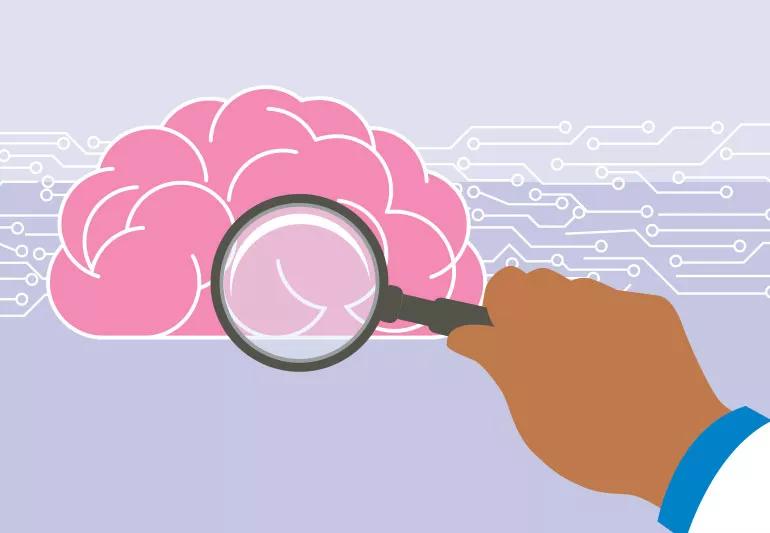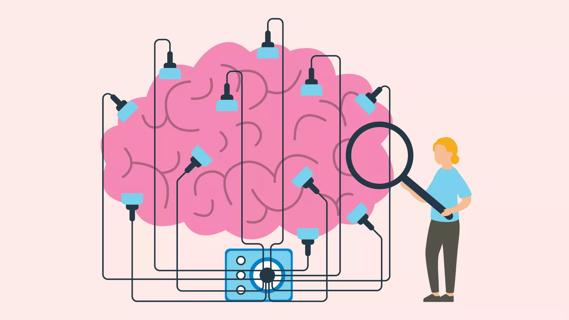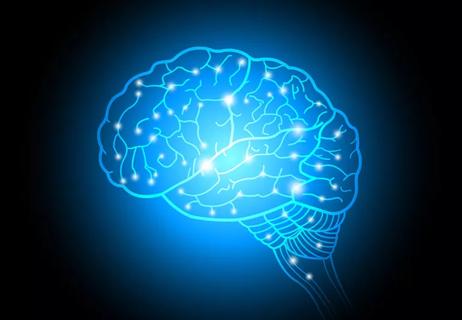This first-of-its-kind study aims to identify biomarkers of neurological disorders

One in every six people around the world lives with a neurological disorder, a broad term used to describe things such as Alzheimer’s disease, epilepsy, multiple sclerosis, headaches or stroke.
Advertisement
Cleveland Clinic is a non-profit academic medical center. Advertising on our site helps support our mission. We do not endorse non-Cleveland Clinic products or services. Policy
Although you can make lifestyle changes to decrease your risk of developing any of these conditions, doctors still can’t pinpoint exactly why some people develop them and others don’t.
However, the Cleveland Clinic Brain Study is aiming to identify biomarkers — think of them as signs or hallmarks — of these neurological disorders.
During the testing, participants will meet with a multidisciplinary team encompassing several centers within the Neurological Institute itself, as well as the Lerner Research Institute and institutes relating to the heart, and head and neck.
The long-term goal is that doctors can then prevent certain neurological disorders from happening — and maybe even stop or slow the progression of these diseases after diagnosis in the future.
Beginning in 2023, doctors anticipate they’ll be able to enroll between 200 and 250 people per month, which will put them on pace to enroll the first 10,000 people in the study roughly between three and four years after it starts.
Cleveland Clinic Brain Study co-PI, Imad Najm, MD, Director of Cleveland Clinic’s Epilepsy Center at the Cleveland Clinic Neurological Institute, shares how the study came about, what makes the study so groundbreaking and what other goals doctors hope to achieve.
Advertisement
Dr. Imad Najm: Today, we diagnose most neurological disorders using neurophysiological tests such as electroencephalograms (EEGs), imaging tests such as MRI and multiple lab studies. Unfortunately, these are helpful only after the disease has progressed. In other words, the diagnosis is made after sizable brain damage has occurred.
Absolutely. I think the biggest challenge is to make the diagnosis before the disease has had time to affect the brain. Once the clinical disease is diagnosed, critical numbers of neurons (brain cells) have been destroyed and made it an almost irreversible progression.
The idea started maybe five, six years ago, in a series of meetings between myself and Dr. Andre Machado, who is the Chair of the Neurological Institute at Cleveland Clinic, and has the vision to start a study of the brain. We were talking about our current challenges in treating neurological diseases and possible ideas for the future and how we — the Neurological Institute and Cleveland Clinic — can make a dent in our understanding and in our treatment of patients with neurological disorders.
During the discussions, we started to think about the ways other specialties have addressed problems. In particular, we focused on heart and cardiovascular disorders, and analyzed why and how we are able to prevent many of the most serious cardiovascular disorders.
We were extremely inspired by the Framingham Heart Study, which is a longitudinal study that was started in 1947 to understand the risk factors that determine the occurrence of cardiovascular diseases in a large population over time.
It enabled us to understand that smoking is bad for heart diseases and that uncontrolled diabetes and high blood pressure can lead to a significant increase in cardiovascular disorders. As we know, this has led to the development of blood pressure medications, better control of diabetes and the development of medications such as statins that resulted in a significant decrease in coronary artery diseases and mortality from heart diseases. Dr. Machado asked, “Why can’t we do something like this for the brain?”
With this study, we’re using state-of-the-art MRI technologies to scan the brain to use almost every type of sequence or process that we have in our hands to image almost everything we can.
We’re also going to have access to billions and billions of data points per person. Using the modern science of bioinformatics, artificial intelligence and machine learning, we might discover new things we didn’t even anticipate.
For example, we now know that during the early stages of a degenerative disease such as Parkinson’s disease, Alzheimer’s or dementia, there may be early changes in the tone of our voice and the cadence of words we articulate. The content of what we say might also be changing.
Advertisement
In addition, we’re looking to identify:
We’re hoping to define some genetic biomarkers. Some of these changes could be at the DNA level, or [involve] the RNA — the part of the genome that translates the message from the DNA to produce a protein that provides the function of a cell or a dysfunction of a particular area of the brain.
These could be genetic or proteins that are either the cause of the disease or the consequence of the damage that it creates to brain cells.
Our gut may give an indication there’s something affecting the brain. That’s why looking at the stool and what we call the microbiome is important.
The eye, and in particular the retina, is part of our nervous system and the window to the brain. The cells in the retina are actually neurons, and there is a nerve called the optic nerve going to the brain.
In the brain study, we are using a scanner that creates an exquisite image of the retina. We hope that these very innocuous and fast scans can give us an indication of what may be going on in our brains before the clinical diagnosis is made. The hope is to use such scans as an additional screening tool for neurodegenerative disorders.
We’re also looking at the relationship between the heart and the brain. One method is using electrocardiograms (ECGs), which can measure the heart rate and give us some prediction of something about to happen.
Advertisement
We’ll also be using the echocardiogram, which looks at the function of the heart as a pump. When a cardiologist does an echocardiogram, they can look at the results and say, “Well, it is within normal limits.”
But what if a person who’s 20 years old has a measurement that their heart is pumping at 80%? What if it is 70% or 75%? These numbers are practically within normal range, but there is less blood going to the brain. Could this be impacting our brain function in the long run? These types can only be answered if large numbers of healthy individuals are studied over a long period of time
We’re trying to study the changes over time in the intellectual and memory functions, as we age.
We’re not collecting a set of data at one single point in time. We are collecting sets of data year after year and following up with our volunteers into later stages of their lives. In particular, we will study healthy people ages 50 years and older over a 20-year period. In addition, we will include people who are 20 years or older who are first-degree relatives of patients affected by multiple sclerosis.
If at a certain inflection point, someone in the study develops a disease, we can measure the clinical changes we’re seeing when the disease has developed. But more importantly, we will be able to identify the footprints of the disease during that silent period during which the brain has been transformed from a healthy one to a brain with some changes.
Advertisement
We believe that the identification of the changes in the various tests during the silent period is key to successful interventions to stop neurological disorders before their clinical expression.
That’s another exciting part of the study — and one of the overarching goals of the study. We’re not just here to diagnose, which we’ve been doing in neurology for 50, 60, 70, 80 years. We are here to diagnose and treat.
I can even take it one step further — our dream is to not only diagnose, but to even predict who is going to develop a disease and come up with a treatment to prevent it rather than to deal with the consequences of a disease that has already developed.
So, the biomarkers that we are looking for — the blood biomarkers in particular, could be used to make a diagnosis. We can do a blood test, say, “Oh, you are at risk of developing Alzheimer’s.” But at the same time, we can see some of these biomarkers become treatment targets.
For example, if we find a particular protein in the blood that is telling us this person is going to develop Parkinson’s disease five years from now, we can partner with companies, foundations, institutions and governments all over the world to develop, test and validate new medications that can target the disease causing proteins.
In doing so, there will be a significant chance of not only treating a particular neurological disorder but, more importantly, to prevent that disorder from happening. That is our dream, and this is what we hope we’ll be achieving.
Learn more about our editorial process.
Advertisement

When the familiar suddenly feels unfamiliar, it could be nothing — or something worth noting

The ‘Six Pillars of Brain Health’ offers a game plan to maintain cognitive function

You can build mental muscle by challenging your mind and giving it new experiences

Different parts are responsible for different things, but you use both sides all the time

Exercise that gets your heart pumping helps keep your body and brain in tip-top shape

Add some brain food to your plate

A collection of fascinating facts

Preparing food isn't just about filling your stomach

If you’re feeling short of breath, sleep can be tough — propping yourself up or sleeping on your side may help

If you fear the unknown or find yourself needing reassurance often, you may identify with this attachment style

If you’re looking to boost your gut health, it’s better to get fiber from whole foods